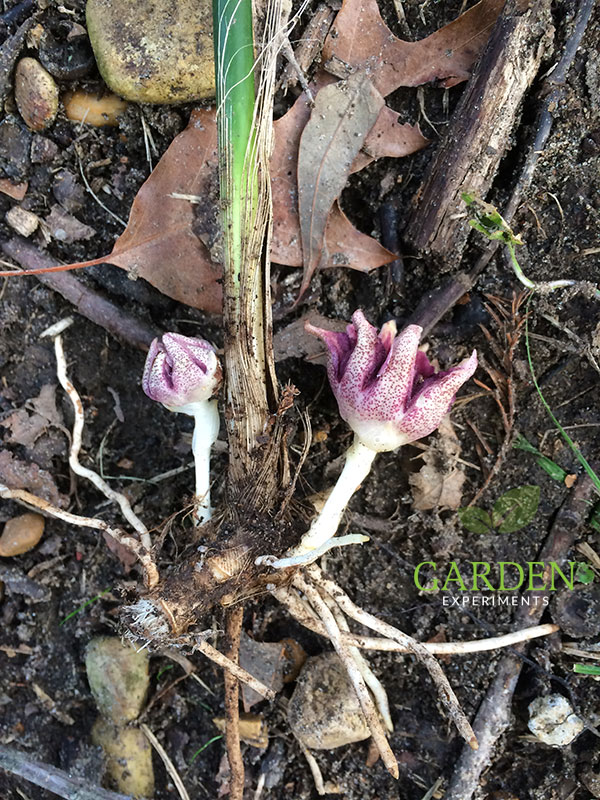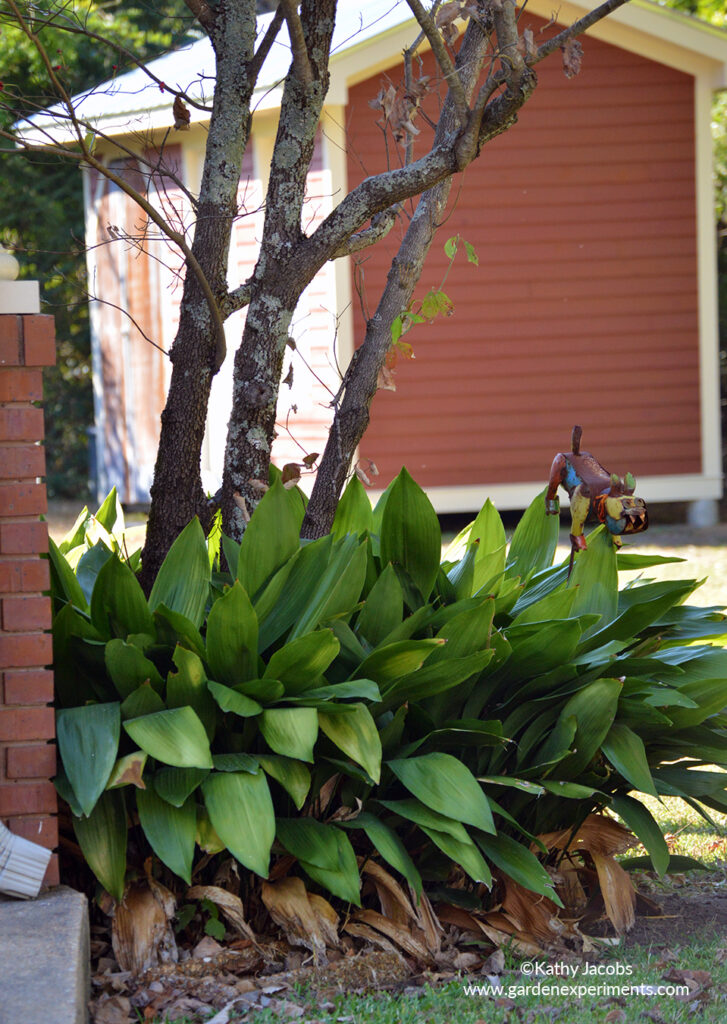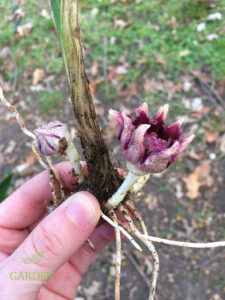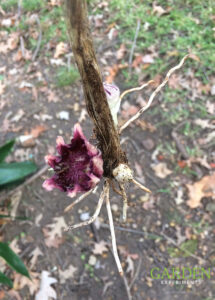I adore plants. So when I had the opportunity to salvage some from the flower beds at my old home, I spent hours of my weekends digging and sweating in the Mississippi humidity in spite of the fact that I didn’t keep these plants.
I just don’t have any more room at my current house for more plants right now and with the winter weather quickly approaching, these transplants needed a new home and quick.
My friends and family were happy to provide these trunkloads of plants with new, happy homes. I would load up the hatchback of my Subaru with plants, call on friends, and make special deliveries from my ‘plant mobile.’ No sense in driving them to my house, unloading them, and then asking people to pick them up when I’ve already got them loaded up and ready to go.
As I was working to remove some hellebores, ferns, hydrangeas, and cast iron plants from the shade garden, I came across an interesting discovery.
My first thought was ‘it’s the plant from The Little Shop of Horrors!’ You know, the alien creature that insists on being fed fresh blood? Well, this organism looked like it had the sharp zig-zagged teeth, and it looked like it was made of something very unplant-like.
Is it a Fungus, a Flower, or an Infection?
The cast iron plants were planted around the base of a large oak tree, rather near to the base of the trunk. The base of these plants was buried under a layer of oak leaves, hidden from view.
I pushed my shovel into the soil and edged around the plants to loosen the roots from the soil so that I could lift them out of the ground. It had been weeks since it rained, so the soil was hard and difficult to dig in and did not yield easily.
As a result, the cast iron plants came out with very little soil on them, but they did have another surprise when I lifted them from their bed.
Growing from the root/stem boundary were several short 3-inch tall fleshy, maroon-speckled, mushroom-shaped objects with a zig-zag edge. I know. Weird description, right? But that’s the best way I know how to describe them.

Each plant clump had 3 or 4 of these things protruding from the stems of the leaves. Was it a mushroom? Well, no, it appeared to be attached and growing from the stem or root system of the plant. Was it a fungal infection? It seemed to be too large for that. I finally got out my phone (of course I carry it with me when I garden) and googled it.
The unusual growths that I uncovered from the leaves were flowers of the cast iron plant (Aspidistra elatior). They are quite unusual.
Since my discovery, I have shared my photos with several people only to discover that these flowers are a rare sighting. One researcher who studied cast iron plants, several people who were in the plant nursery industry for several decades, and two horticulturalists that I spoke with have never seen these flowers.
Pollination for the Cast Iron Plant
The shape, color, and location of a flower is related to the pollinator that it is trying to attract. Often, these two things evolve with one another. Scientists have been debating over what pollinates the cast iron plant flowers for a long time.
In the 1800’s some scientists proposed that slugs pollinated these flowers, while others disagreed and said that springtails (small wingless hexapods in the soil) pollinated them. Recent research (2017) on Japan’s Kuroshima Island showed fungus gnats to be the best pollinators (New Scientist, November 29, 2017; Science Daily, November 15, 2017).
It amazes me that after gardening for most of my life, my garden and its plants, insects, and wildlife can still surprise and amaze me.



